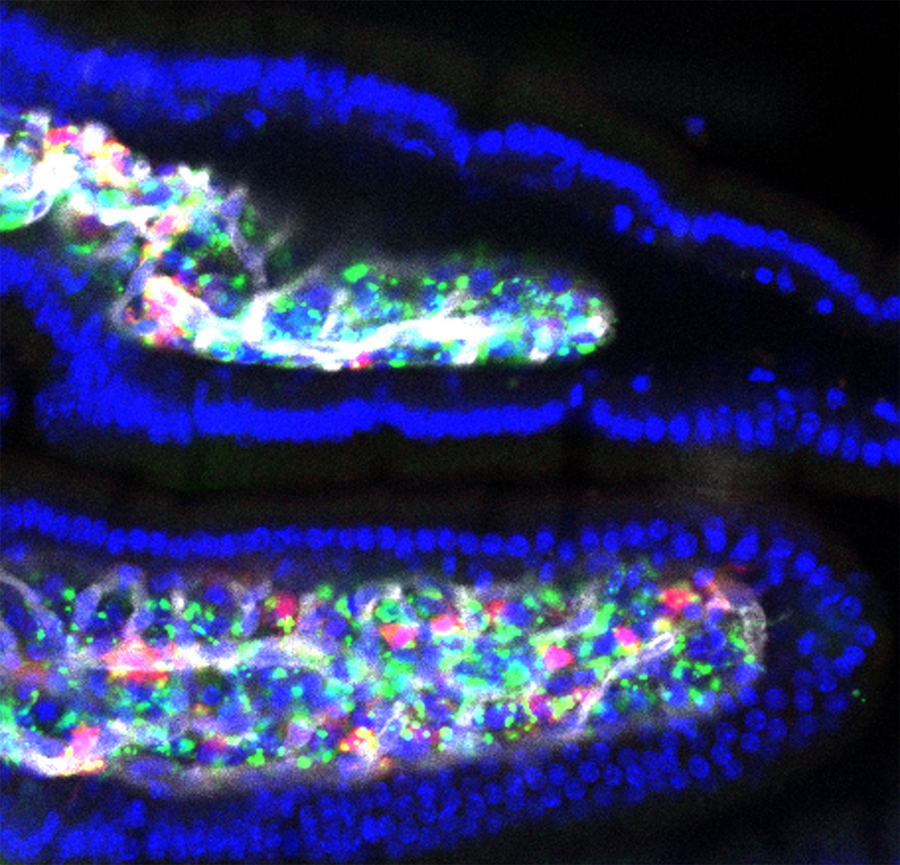
AAM (red), macrophages (green), cell nuclei (blue) and blood vessels (white) in the lamina propria of the small intestine. © Krljanac et al.
Cells of the immune system protect us from infections by various microorganisms on the one hand and contribute to tissue damage being repaired on the other. This function is particularly important in organs that are in contact with the environment, such as the skin, lungs, or intestines. In this context, "alternatively activated" macrophages (AAM), a subgroup of scavenger cells, play a key role. The research group of David Vöhringer, professor at the Department of Infection Biology at the University Hospital Erlangen, has now made AAM visible by expressing a fluorescent protein in the tissue of a mouse. This tissue-specific mouse was provided by the "Transgenic Core" facility at the MPI-CBG. The researchers in Erlangen could also show that AAM plays an important role in the defense against worm parasites and the repair of tissue damage in the lungs.
Branislav Krljanac, Christoph Schubart, Ronald Naumann, Stefan Wirtz, Stephan Culemann, Gerhard Krönke, and David Voehringer: RELMα expressing macrophages protect from fatal lung damage and reduce parasite burden during helminth infection. Science Immunology. 24 May 2019.